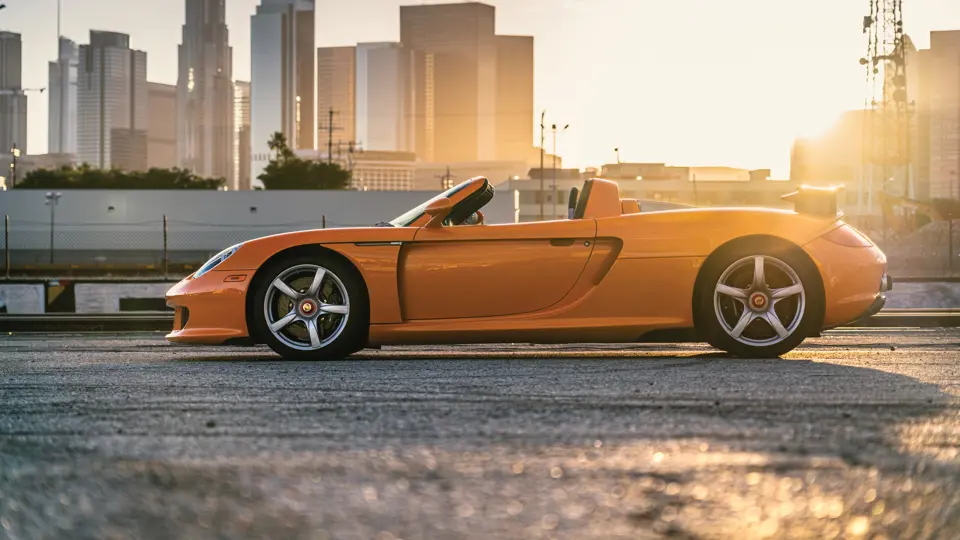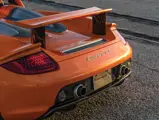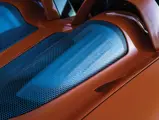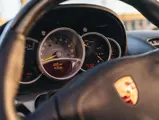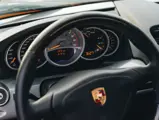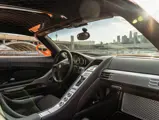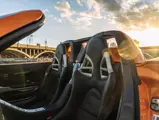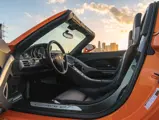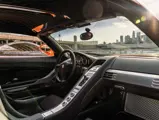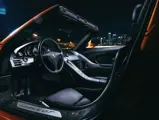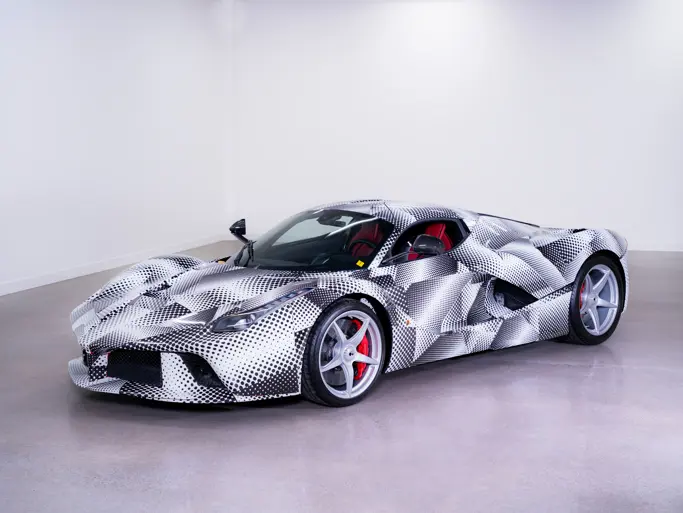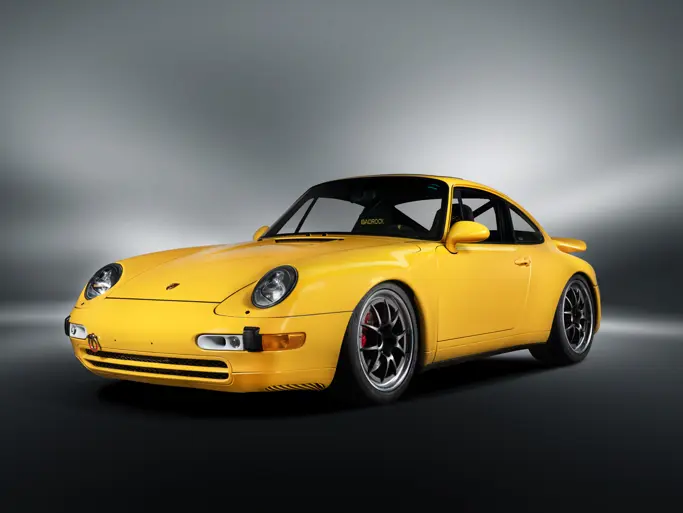
2005 Porsche Carrera GT
{{lr.item.text}}
$1,193,000 USD | Sold
{{bidding.lot.reserveStatusFormatted}}
- Showing only 265 original miles
- Finished in stunning paint-to-sample Arancio Boreallis
- Nearly $37,000 in exclusive options, including rare black-painted brake calipers
- Includes optional luggage set and original window sticker
- Porsche Certificate of Authenticity
Porsche took to the new GT1 sports-car racing class in the mid-1990s with a vengeance. GT1 rules allowed for entrants to discard most notions of modifying a street-going car for race use. Instead, automakers could do the opposite by homologating a race car to be just within the legal bounds in some markets. With its 911 GT1, Porsche used the 911 name on a car that shared little more than its headlights.
The 911 GT1 showed that Porsche could create a world-beating racing car once again, years after its 962 was retired. For a road-going version, Porsche satisfied legal requirements in Europe by detuning the 3.2-liter flat-six to “just” 536 horsepower. Due to the arrival of the new water-cooled Type 996, the 911 GT1 Strassenversion wore the new car’s headlights that integrated the turn signals and driving lights in a single unit. The 911 GT1 laid the groundwork for the legendary Carrera GT a few years later.
FIA rule changes cut off Porsche’s plans for a new Le Mans prototype for the 1999 racing season, leaving its new 5.5-liter V-10 engine in search of a home. In Stuttgart, however, a good engineering project is never left on the shelf, and the automaker chose instead to build a car around its ferocious new powertrain.
The 68-degree 5.7-liter V-10 featured four valves per cylinder, variable valve timing on its intake camshafts, and a screaming 8,400 rpm redline. Output was an arresting 605 horsepower. A six-speed manual transmission with a Porsche carbon-ceramic-composite clutch would shuttle power to the rear wheels. The engine would arrive at the end of a decidedly mechanical era as automakers sought to integrate sophisticated computer controls into every aspect of new cars, especially their traction management systems. Even track cars would begin to task advanced computer systems to manage engine power within a few years. In the Carrera GT, Porsche used only a traction control system because otherwise the engine’s immense power would readily overcome its tires.
The Carrera GT was more than a race engine and transmission built into a car. The design debuted in concept form at the 2000 Paris Motor Show, and its motorsport roots were obvious. The car featured a carbon-fiber monocoque and subframe sourced from Italian firm ATR Composites that was light and strong. Underneath, the suspension was race-ready with inboard rocker arms poking between upper and lower wishbones at all four corners. Staggered 19-inch front and 20-inch rear magnesium-alloy center-lock wheels were mounted over massive eight-piston brake calipers up front and four-piston calipers at the rear. The carbon-ceramic brake rotors were ventilated and cross-drilled for optimal high-speed braking. A retractable rear wing extends above 75 mph to add downforce.
The production car that arrived in 2003 after being shown in thinly disguised concept form at the 2000 Paris Motor Show weighed just 2,755 pounds. It could vault to 60 mph in just four seconds, shifted as fast as a driver could possibly handle. On a closed course, it topped out at around 200 mph. At the expert hands of factory test driver Walter Röhrl in July 2004, a Carrera GT rocketed through the Nürburgring Nordschliefe in a mere 7:28. The record would stand for more than half a decade.
The Carrera GT remained something of a road car, too. Its interior showed extraordinary attention to detail, unlike other cars that might boast similar performance. Power features, airbags, an effective climate control system, and Bose audio gave it luxury-grade comfort. A beech-wood gear knob standard on early models served as a nostalgic nod to the Porsche 917 Le Mans racers.
Citing stringent standards in the U.S., Porsche planned to close out production of the Carrera GT in 2006. Before doing so, the automaker opened up the CGT to more factory customization. The paint-to-sample Arancio Boreallis example offered here is perhaps the most extreme expression of what Porsche could offer, both in terms of its performance and its eye-catching color. The car’s attention-grabbing exterior is paired with a Dark Grey leather interior. As originally ordered, the car was outfitted with $36,960 in exclusive options—$23,500 of which was for the unique color.
Even the brake calipers were ordered in black for an additional $8,460. Other optional equipment includes carbon-fiber trim on its steering wheel, handbrake, and gear lever. Its factory-fitted matching Dark Grey luggage set has been retained and will be included with the sale.
The orange Carrera GT was built in September 2005 toward the end of production for the American market and delivered new to legendary Porsche retailer Stoddard Imports in Willoughby, Ohio. The sports car has covered just 265 miles since. A major service to the tune of $25,000 was recently performed at Niello Porsche. The Carrera GT is offered with its factory window sticker and a Porsche Certificate of Authenticity.
As electrification trickles from the 918 into the rest of the Porsche lineup, the Carrera GT stands apart as a reminder of the company’s audacious, not-too-distant past—especially in unique paint-to-sample Metallic Orange.
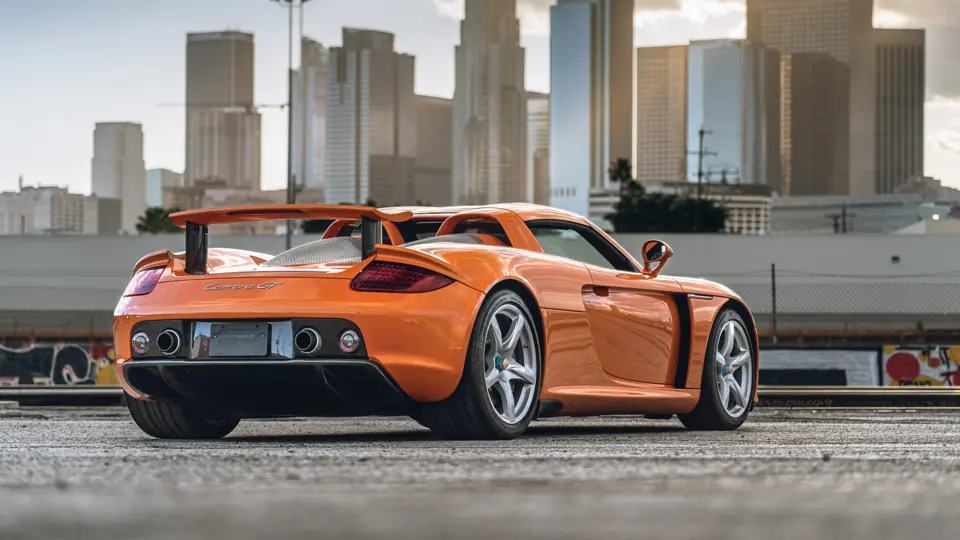



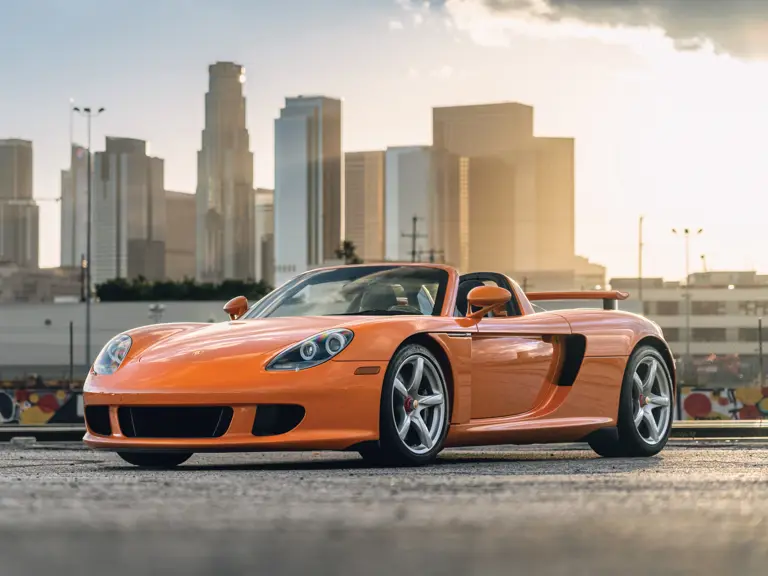

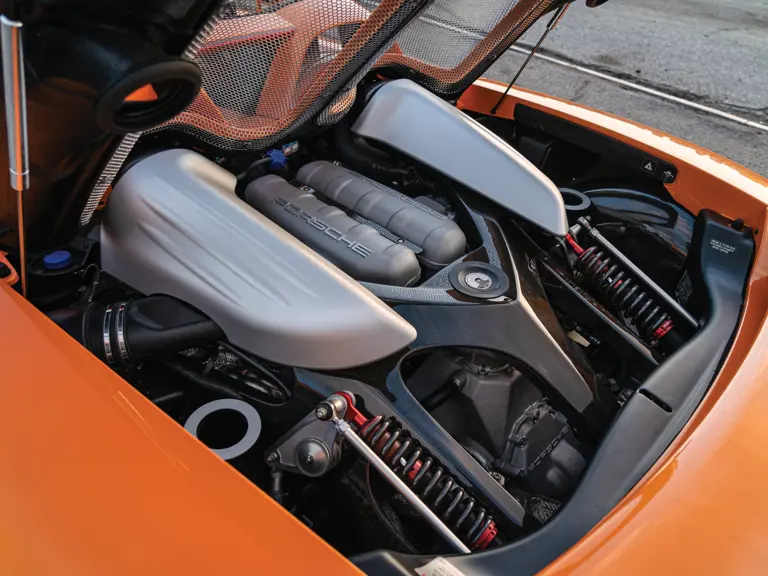
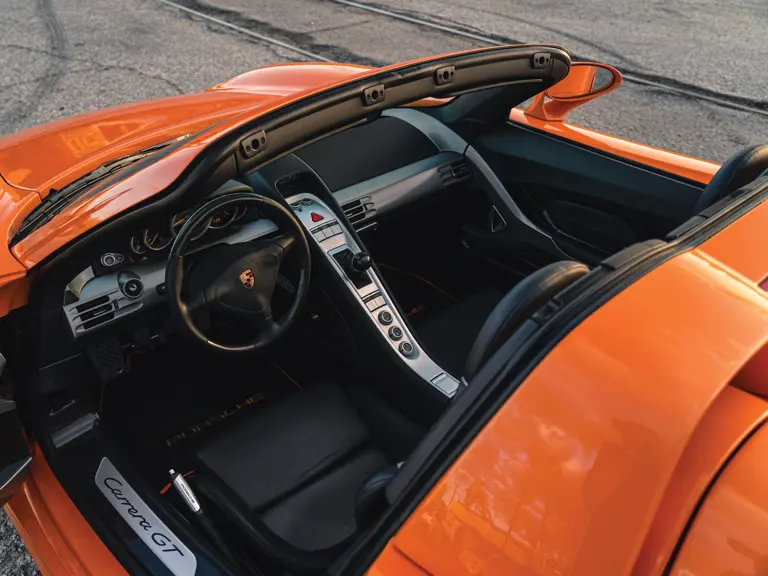

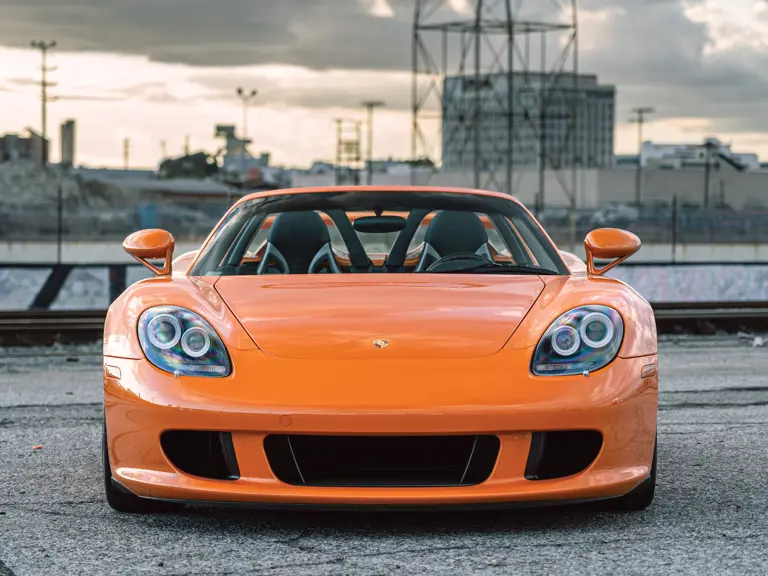

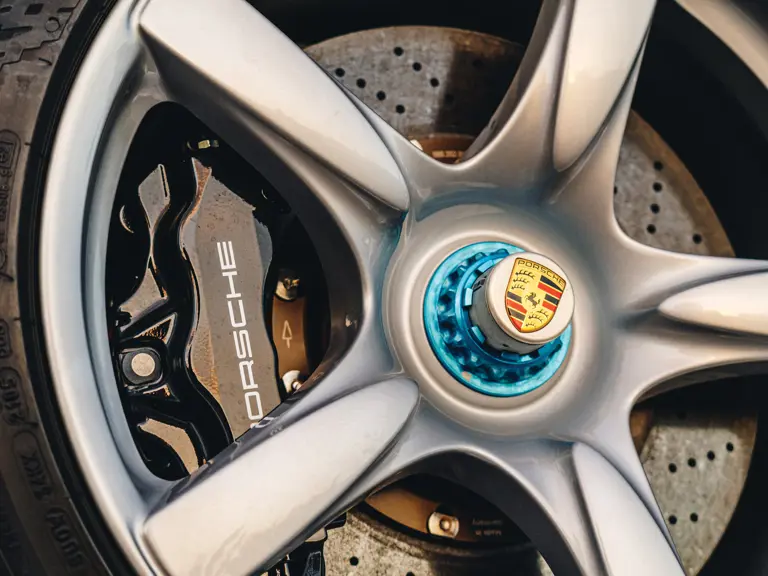
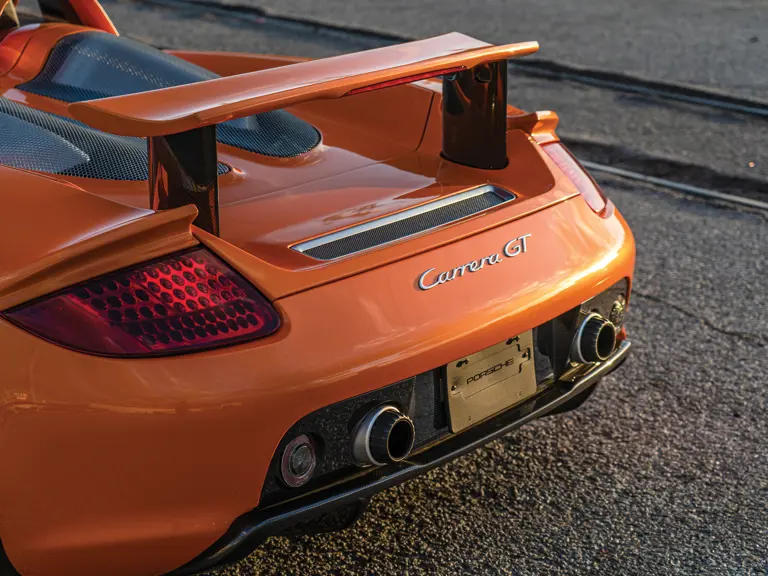
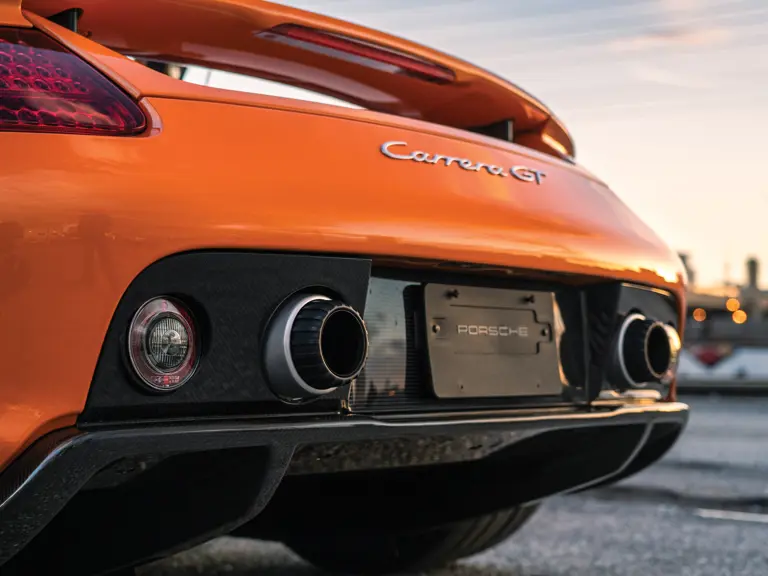

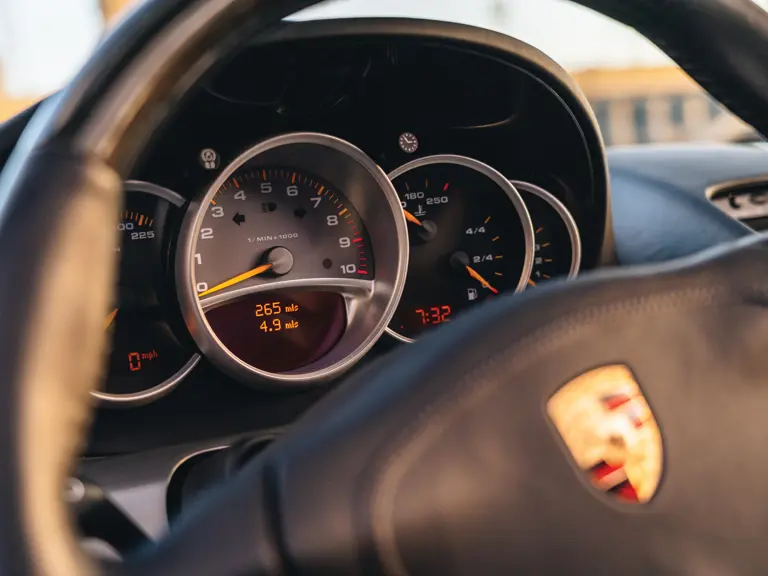
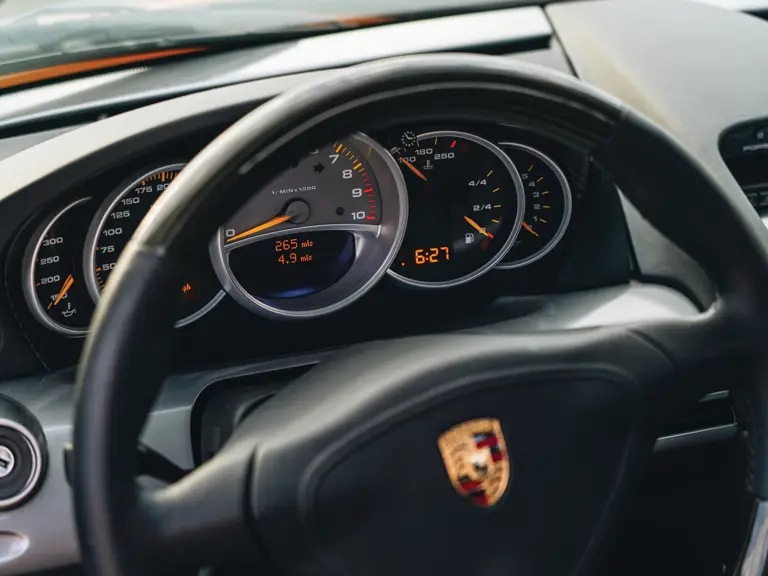
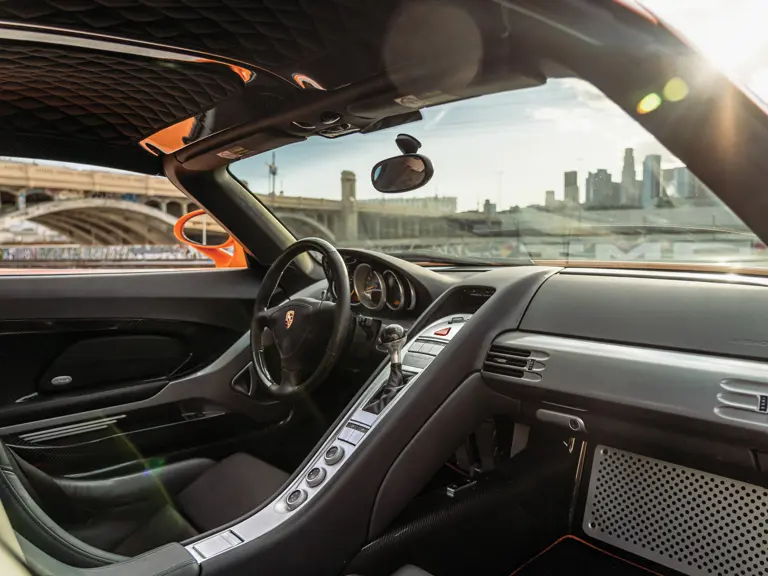
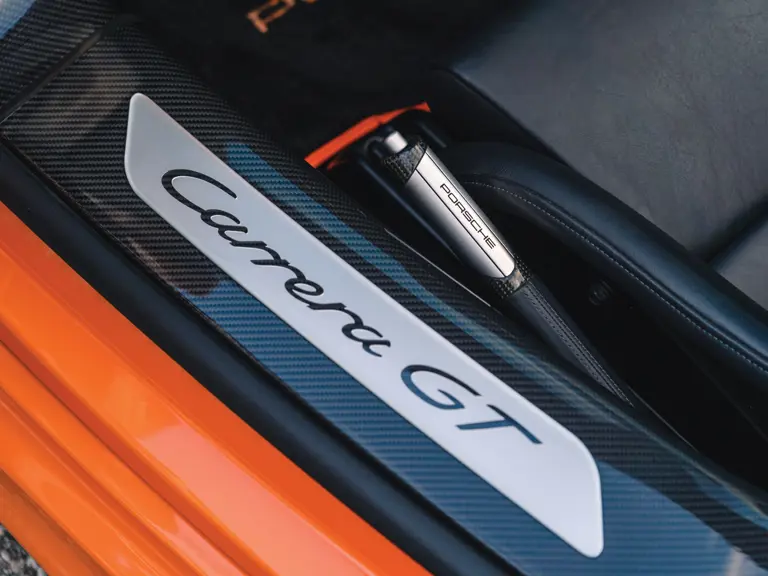
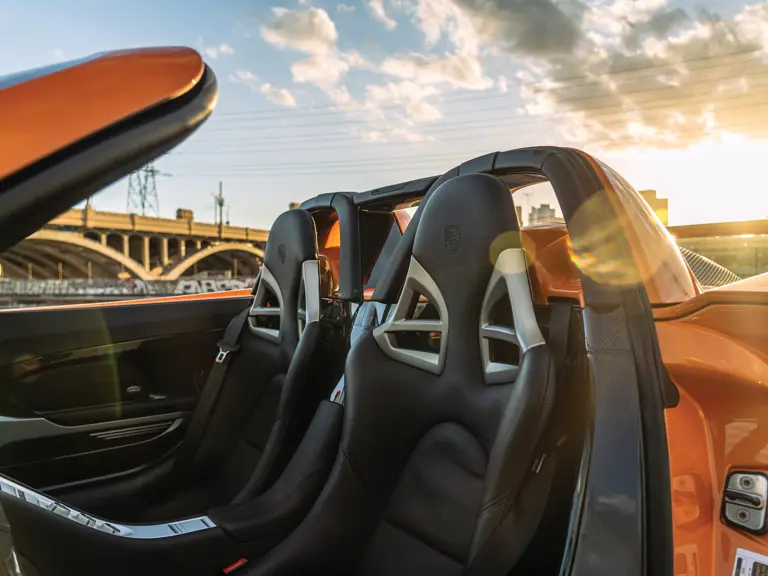
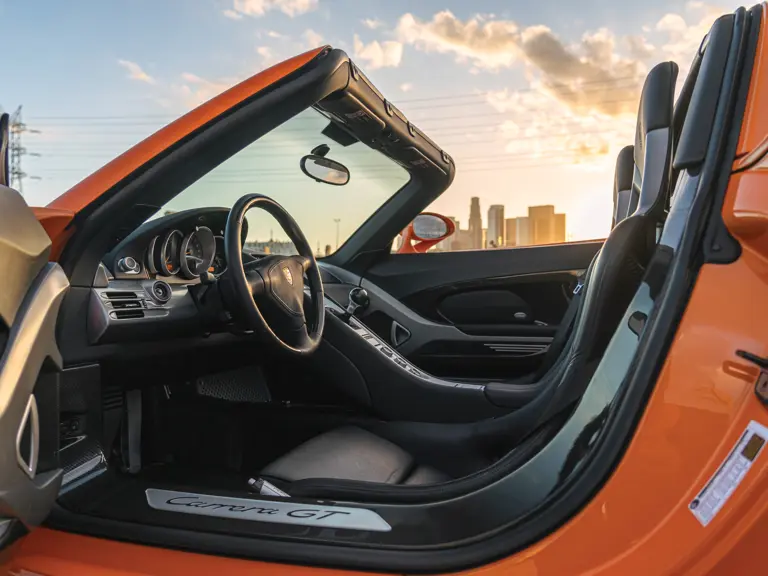
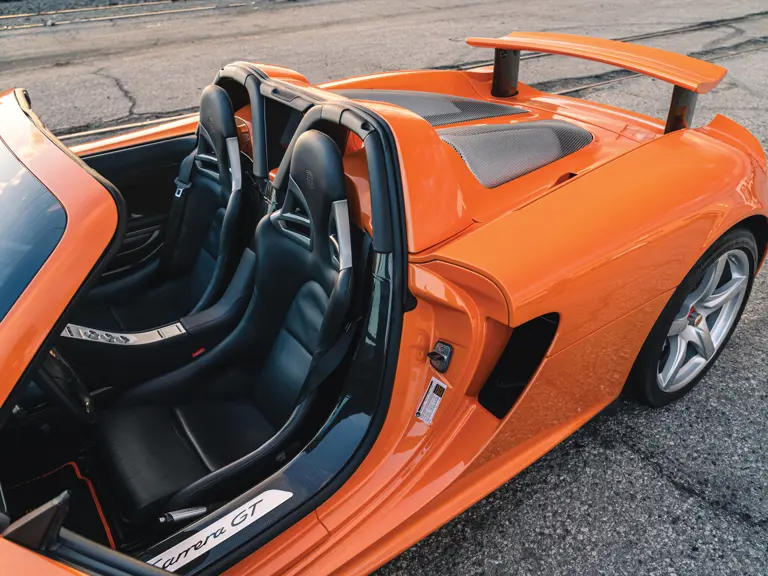
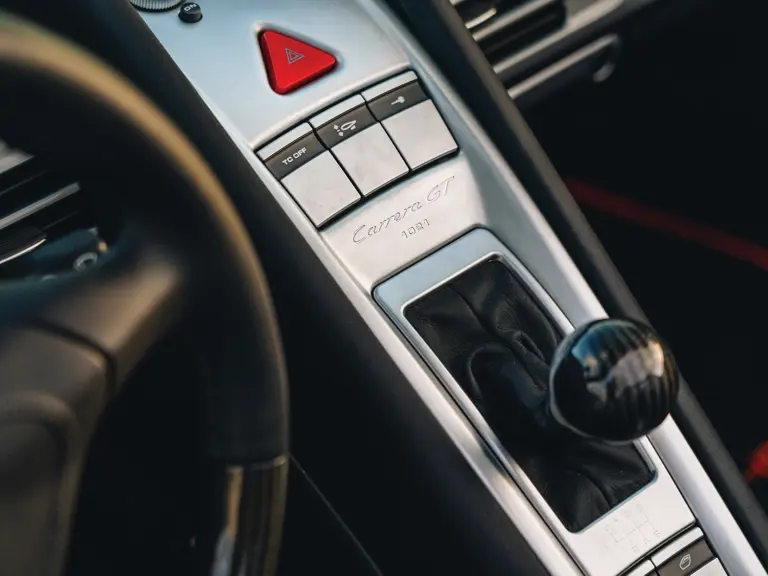

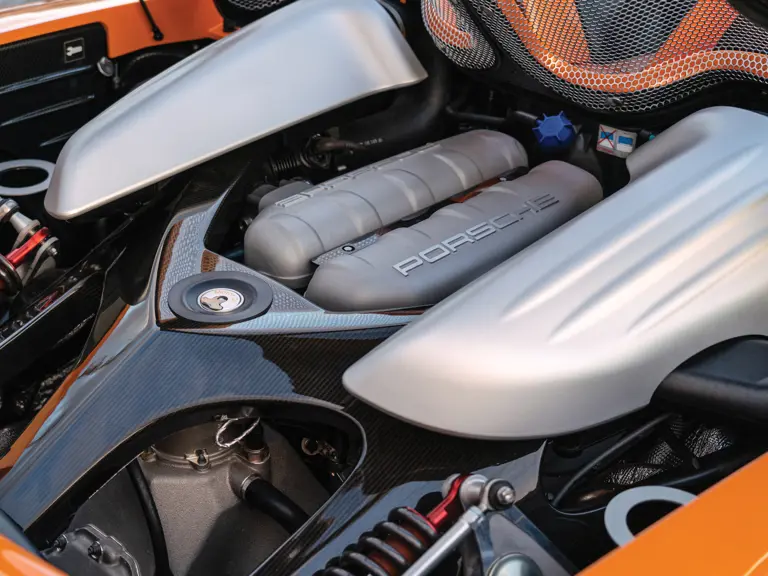

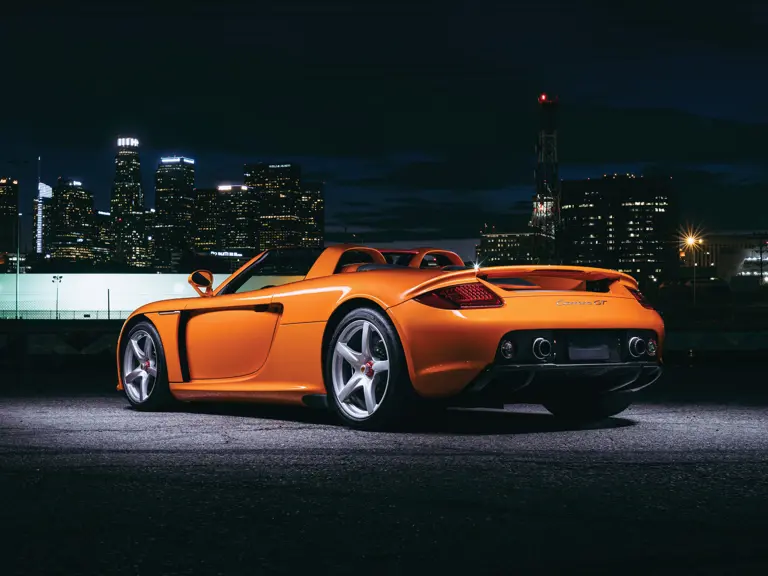

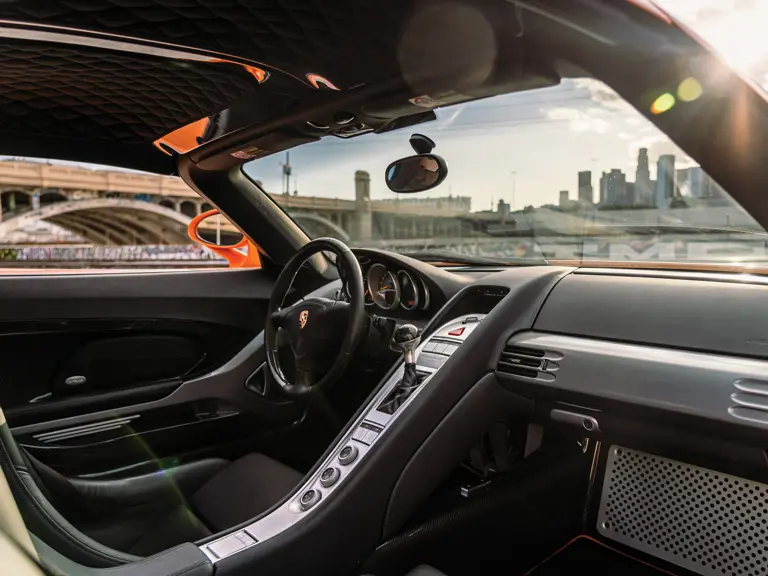
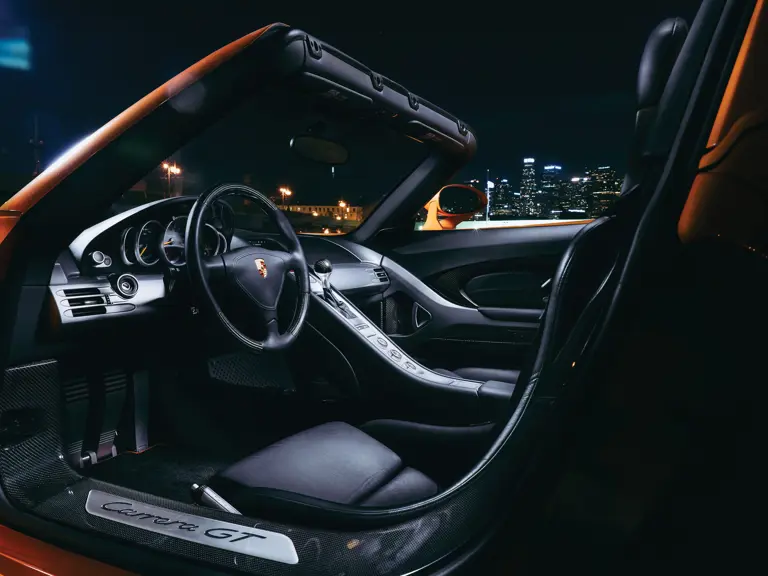

 | Monterey, California
| Monterey, California
